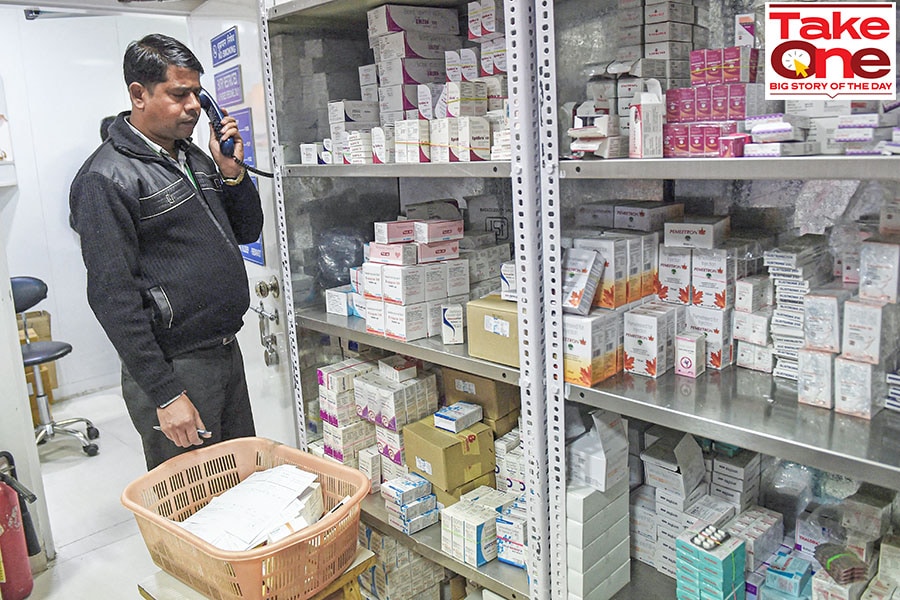
Budget 2024: Indian pharma industry expects tax breaks and funding for innovation
There is need to improve local value addition capabilities, upskilling people, and streamline regulatory frameworks, say experts
 A file photo shows an employee with a pharmacy taking an order for generic drugs for a client in New Delhi.
Image: Prakash Singh / AFP
A file photo shows an employee with a pharmacy taking an order for generic drugs for a client in New Delhi.
Image: Prakash Singh / AFP
The Indian pharmaceutical industry commands a significant share of more than 20 percent in the global medical supply chain. With the interim budget coming up, the Indian pharma industry is expecting tax breaks, benefits that are focussed on research and development (R&D) and a further boost in the production linked incentive (PLI) Scheme.
“While India ranks third globally in terms of production volume, the industry ranks 10th globally in terms of value addition. This highlights the need for improved local value addition capabilities that can be addressed through appropriate policy interventions,” says Joydeep Ghosh, partner and industry leader, Life Sciences and HealthCare Industry, Deloitte India.
Experts are hoping that the government will bring the Goods and Services Tax (GST) rate on APIs at par with formulations. “At present, APIs attract a higher GST rate of 18 percent vis-à-vis formulations that attract a lower rate leading to accumulation of credit for the pharma industry. Significant expenses on capital goods also add to credit accumulation… The GST rate across the supply chain should be around 12 percent,” adds Ghosh. Additionally, industry leaders are hoping that the centre offers additional incentives to promote manufacturing of pharma products.
Pharma manufacturers strongly feel that there is need to upskill people working in the industry, “particularly in the manufacturing and quality functions. To incentivise organisations for providing funding to such training institutes, the government can propose an additional deduction (1.25 times) on the funds spent by organisations for this purpose,” explains Ghosh.
While workforce being upskilled is key to better manufacturing standards in the country, Ghosh believes due to the multiplicity of regulatory processes and multiple regulators, undertaking operations become complex and time consuming. “We need to streamline the existing regulatory framework through a ‘one regulator’ approach,” he says.








